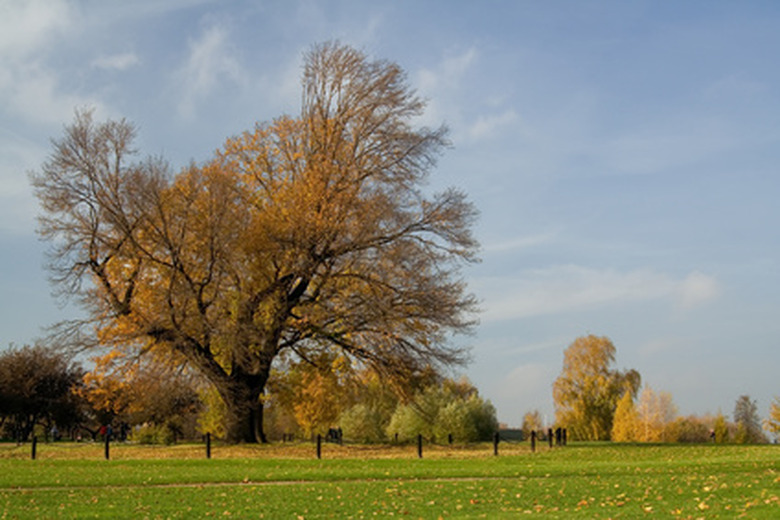Live Oak Tree Fertilizer
Southern Live Oaks are tall, stately evergreen trees of the Southern United States, the state tree of Georgia and the signature of large, graceful landscapes. They can live for centuries, spread 90 square feet and top 100 feet.
For those with the room for a live oak, their care is fairly simple. Keeping a tree adequately fertilized while they become established is a key to a long healthy life for your live oak.
Live Oak History
Quercus virginiana trees are among the most popular and valued trees grown in the Southern and coastal United States. Some venerable specimens are so ancient they were seedlings in the 1700s and have names registered with Live Oak Societies.
Also known as evergreen oaks, Southern live oaks get their name because they seem to have leaves all year, while other oaks lose theirs and appear dead. Live oak leaves turn yellow and drop off in the spring just before new growth.
- Southern Live Oaks are tall, stately evergreen trees of the Southern United States, the state tree of Georgia and the signature of large, graceful landscapes.
- Also known as evergreen oaks, Southern live oaks get their name because they seem to have leaves all year, while other oaks lose theirs and appear dead.
Live Oak Health
Healthy young live oaks can grow two and a half feet per year. One has lived a thousand years, according to Texas Parks and Wildlife, with a 35-foot trunk and massive horizontal branches.
Pruning is vital for a healthy live oak. Multiple trunks and tangled limbs should be removed for the first three years, then every five years to age 30, to establish a strong trunk and branch structure.
Live Oak Care
Live oaks are best planted in the cool winter months before the heat of summer. Nursery-pruned trees with strong leaders in 15-gallon containers are ideal. Seedlings planted in holes three times as wide as the root ball have room to spread and grow. Compost, pine bark or other soil amendments are not necessary. The planting hole should be watered thoroughly to eliminate all air pockets in the soil and the area mulched to a depth of two inches. Leave a breathing space around the trunk.
- Healthy young live oaks can grow two and a half feet per year.
- The planting hole should be watered thoroughly to eliminate all air pockets in the soil and the area mulched to a depth of two inches.
Live Oak Fertilizer
Live oaks do well without fertilizer their first year; then focus on developing the root system by using a fertilizer with a significant proportion of phosphorus. In the third year, switch to an 8-2-4 compost-based fertilizer ( 8 percent nitrogen, 2 percent phosphorus and 4 percent potassium) for healthy shoots, according to the Lady Bird Johnson Wildflower Center. Compost is an excellent fertilizer for live oaks. Apply the fertilizer in February from near the trunk to a foot past the outside leaves and water in thoroughly.
Mature live oaks do not need fertilizing unless they stop producing new growth.
Space Considerations
Most suburban and urban homes lack the space for a live oak, which can spread to 90-by-90 feet with many low-hanging branches. Grown along avenues, the roots will eventually buckle pavement and concrete sidewalks if planted too close. They will also uproot driveways and patios.They should be planted at least 40 feet from overhead power or phone lines.
- Live oaks do well without fertilizer their first year; then focus on developing the root system by using a fertilizer with a significant proportion of phosphorus.
- Most suburban and urban homes lack the space for a live oak, which can spread to 90-by-90 feet with many low-hanging branches.
